Free Press Flashback returns to the beginning of the end of Detroit’s ornate seat of government. The beloved building was dedicated in 1871, but became expendable in the eyes of city officials after what is now called the Coleman A. Young Municipal Center opened in 1955. Conservationists waged a long campaign to save it. This story appeared on page 1 on August 15, 1961. After the article follows a large number of facts about the Old Town Hall, available at historicdetroit.org.The old city hall began to die Monday evening.
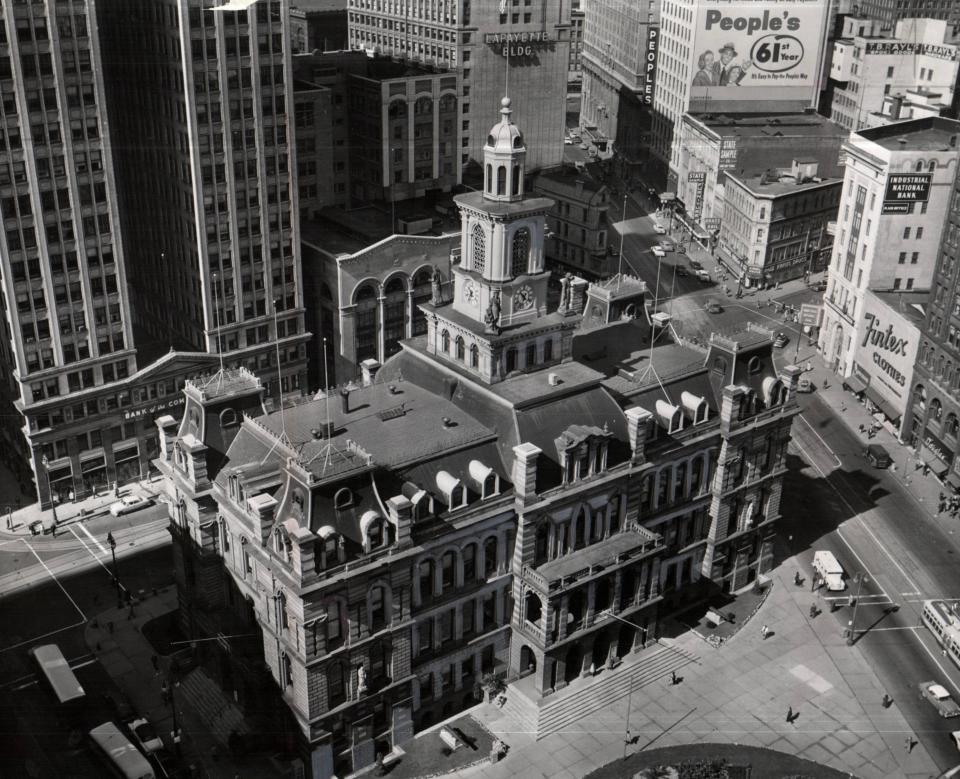
Union Wrecking Co. crew members showed up unannounced. at 7:48 PM with a giant crane at Woodward and Michigan. A few minutes later, a 4,800-pound wrecking ball crashed into the historic building.
The ball hit the upper left corner of the roof portion of the porch and a huge chunk of Amherst stone fell in a cloud of dust.
“The old building has reached the point of no return,” said Union President Henry Mardigian. “This is the day our contract starts and we are here to get the job done.”
Within 25 minutes the roof portion of the veranda, with its supporting pillars, on the front steps was in ruins.
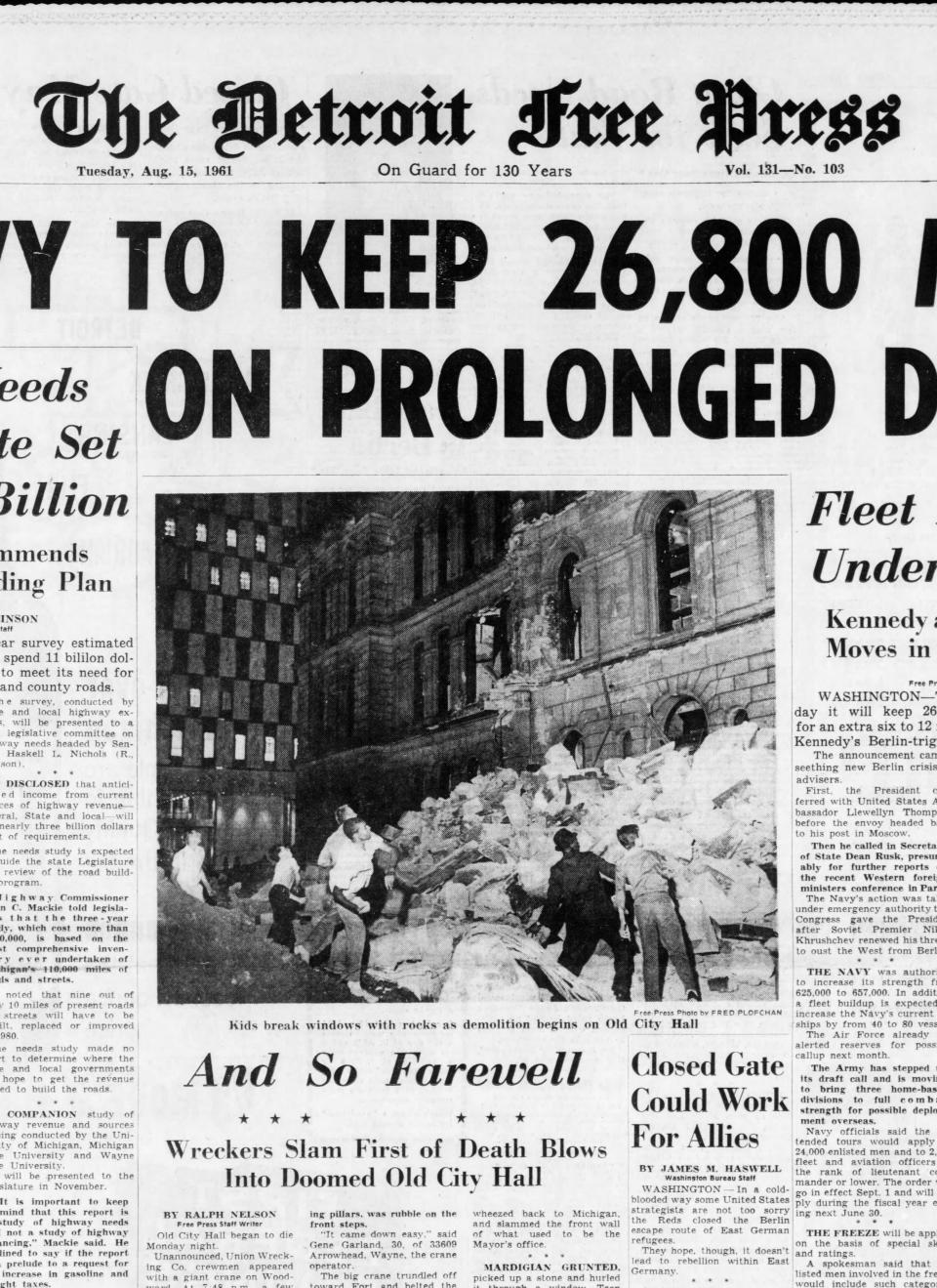

“It was easy,” said Gene Garland, 30, of 33609 Arrowhead, Wayne, the crane operator.
The large crane moved away towards Fort Street and secured the front of the building. Then he flew back to Michigan and punched the front wall of what used to be the mayor’s office.
Mardigan growled, picked up a rock and threw it through a window. Teenagers in the crowd grabbed rocks and joined him. The old town hall stood silent and accepted the outrage.
Reporters scanned the spectators. They could see no city official; no one had come to witness the death of the structure that had been the centerpiece of Detroit for 92 years.
The building avoided death for decades
Mardigan said Monday’s “symbolic” attack on the building would be the last exterior work his company would do for about two weeks. Twenty-five stones will be removed from the building to be used as the basis for historical markers. The tower clock is also preserved.
In two weeks, “a bigger crane, with an 8,000-pound ball, will really overwork the building,” he said.
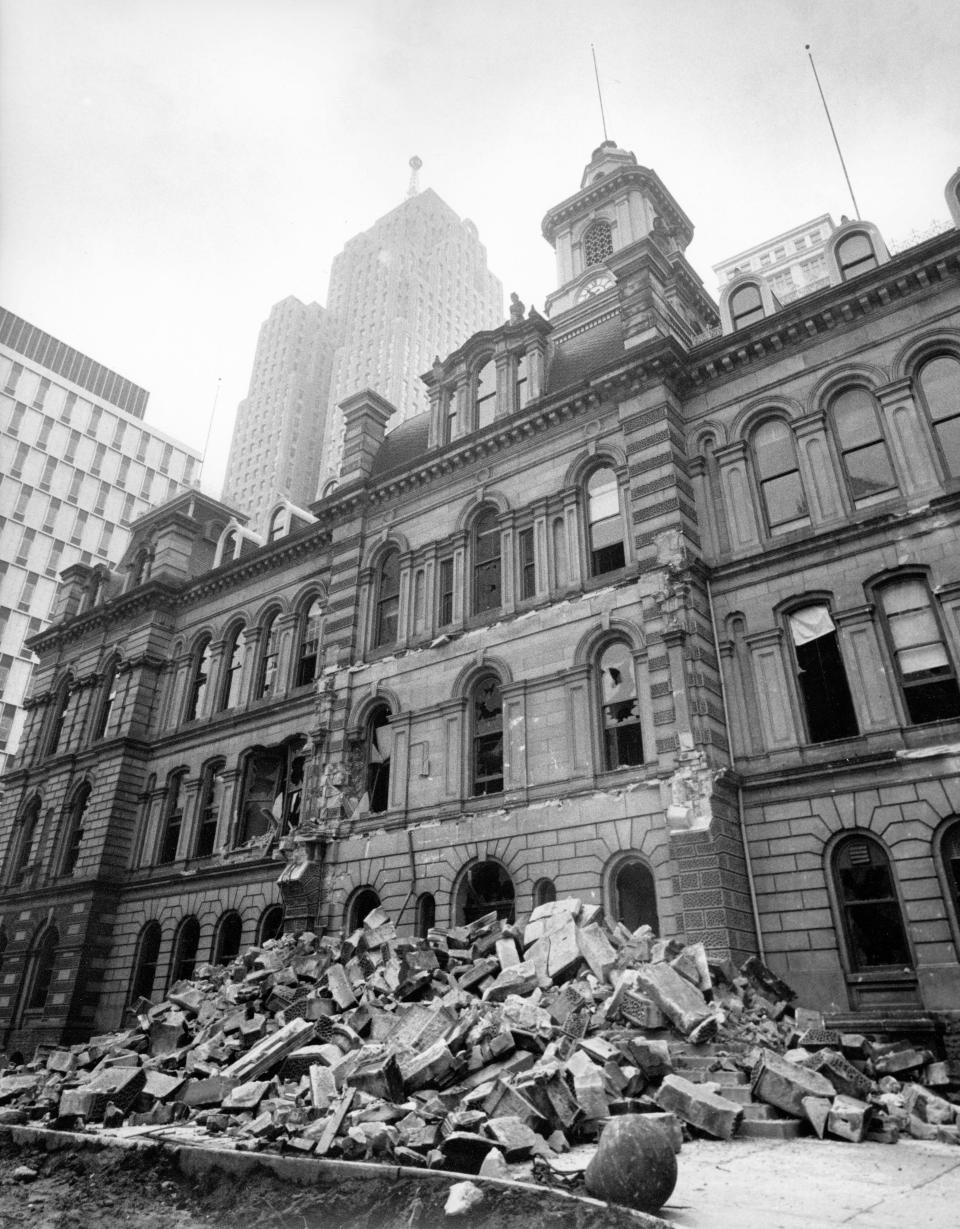

There have been many campaigns to get rid of the building.
One in 1926 was intense. Ditto 1935. Many Detroiters, however, loved the bulky stone structure.
“Never as long as I live,” said the late John C Lodgeformer mayor and chairman of the Common Council.
Lodge led a group of politically and financially powerful men who angrily opposed extermination proposals. But those are long gone. Conservationists have waged a fierce legal and public relations battle to save the building in recent years, but time was running out.
Remembering the mayors, good and bad
The old town hall has been empty of disaster for weeks. Statues and cannons have disappeared. The life-size portraits of almost 100 years of mayors that once lined the high corridor on the first floor have disappeared.
The mayors who occupied City Hall were mostly honorable men, such as Hazen Pingree and Edward J. Jeffries and Al Cobo. Some were lesser men. Some caused scandals.
Charles Bowles was recalled during Prohibition. Richard Reading was jailed in the mid-1940s for taking transplants. But the honorable men were numerous enough to advance Detroit decade after decade.
The council members were also largely dedicated people who loved the city. There was Lodge and James Garlick and John Kronk and a legion of others.
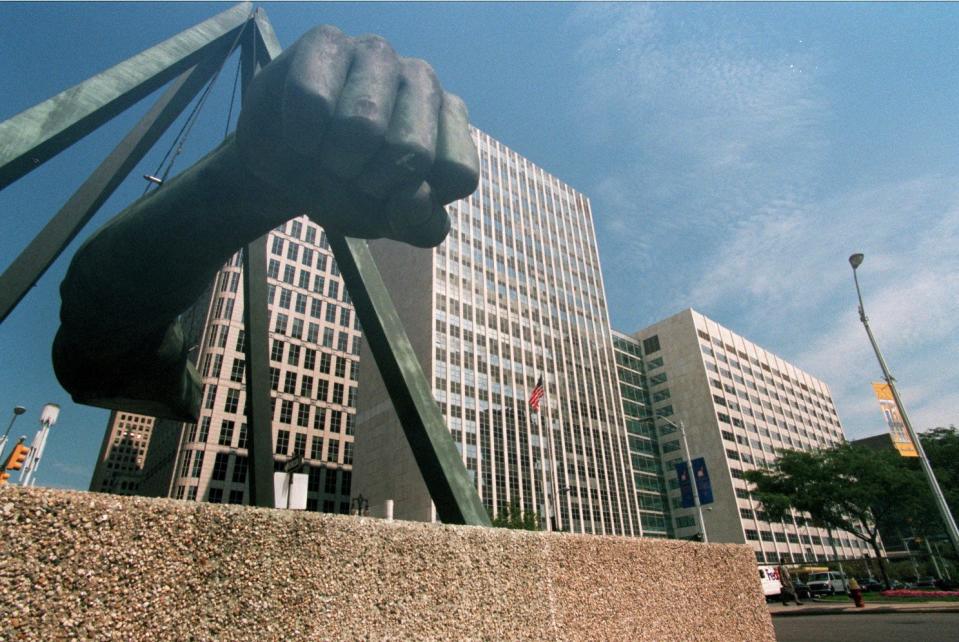

But some of them were also lesser men.
Memories now…
Friends who fought to save the building during this latest campaign were finally suppressed in federal court Monday when Judge Theodore Levin ruled he had no jurisdiction over a final request to restrain the destroyers.
So hours after Levin ruled, the destroyers arrived.
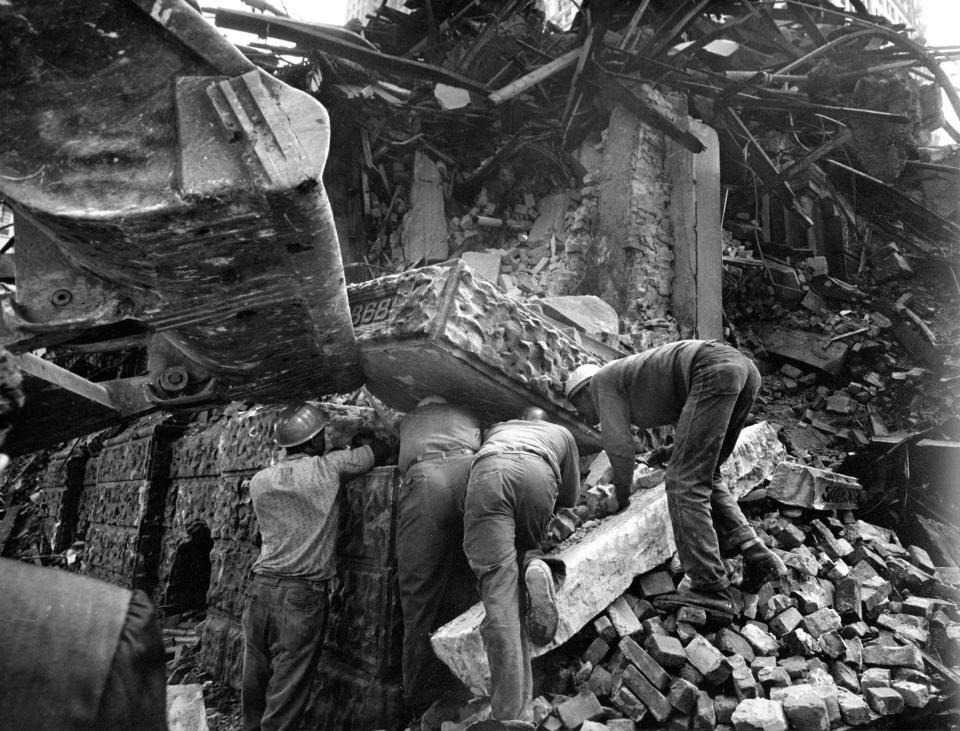

The site of the Old City Hall became Kennedy Square, a lively meeting space in a landscape of cold concrete. It was replaced by the One Kennedy Square building in 2005.
(Editor’s note: The reporter’s 1961 characterization of Mayor Cobo as an “honorable” man has been reassessed in recent years in light of Cobo’s racist actions while governing Detroit in the 1950s. Officials removed his name from the Detroit Convention Center in 2018.)
Facts about the old town hall
Source: historicdetroit.org
Dedicated: July 4, 1871Builder: N. Osborn & Co. from Rochester, NY
Cost: $379,578, about $8.24 million today
Style: Italian Renaissance and French Second Empire
Description: The building was three stories high and made of cream-colored Amherst sandstone quarried near Cleveland.
The clock: In the center stood a bell tower, which rose 55 meters above the street. The building was almost twenty years older than the city’s first skyscraper, so it literally towered over the city for years.
One of the country’s top clockmakers, WA Hendrie of Chicago, created the gigantic timepiece especially for Detroit and considered it his masterpiece.
The four clock faces – each measuring 2.5 meters in diameter and made in Glasgow, Scotland – were illuminated at night so that citizens in the city center could see the time.
When the 125-pound pendulum first saw action at the building’s formal dedication on July 4, 1871, it was the largest bell in the United States.
Nice tradition: No one knows when or how this custom began, but the magic of the ringing bell on New Year’s Eve drew hundreds of couples to City Hall, where they kissed at the stroke of midnight.
Interior: Equipped with black walnut and oak furniture, embossed with wood in lighter colors. The courtrooms and offices were filled with natural light streaming in through fifteen large windows on each floor.
“There is not a single room or hall that needs to be artificially lighted from sunrise to sunset,” Harper’s Weekly noted in an 1871 article.
The building was said to be fireproof, with iron beams and black and white marble floors on brick arches. The grand staircase was made of cast iron. Two iron fountains stood in front, as did the cannons captured by Commander in the War of 1812. Oliver Hazard Perry at the Battle of Lake Erie on September 10, 1813 – a battle that sealed the American victory.
Outdoor images: In niches at the corners of the building stood four statues that recalled the city’s French heritage: city founder Antoine Laumet de la Mothe Cadillac, Jesuit missionary Father Jacques Marquette, explorer Robert Cavalier Sieur de LaSalle, and Father Gabriel Richard, co-founder of the University of Michigan. They are at Wayne State University today.
The fight to save the building: After years of debate and study, the Common Council voted 5-4 in January 1961 to demolish the building. Mayor Louis Miriani was a strong supporter of its demolition.
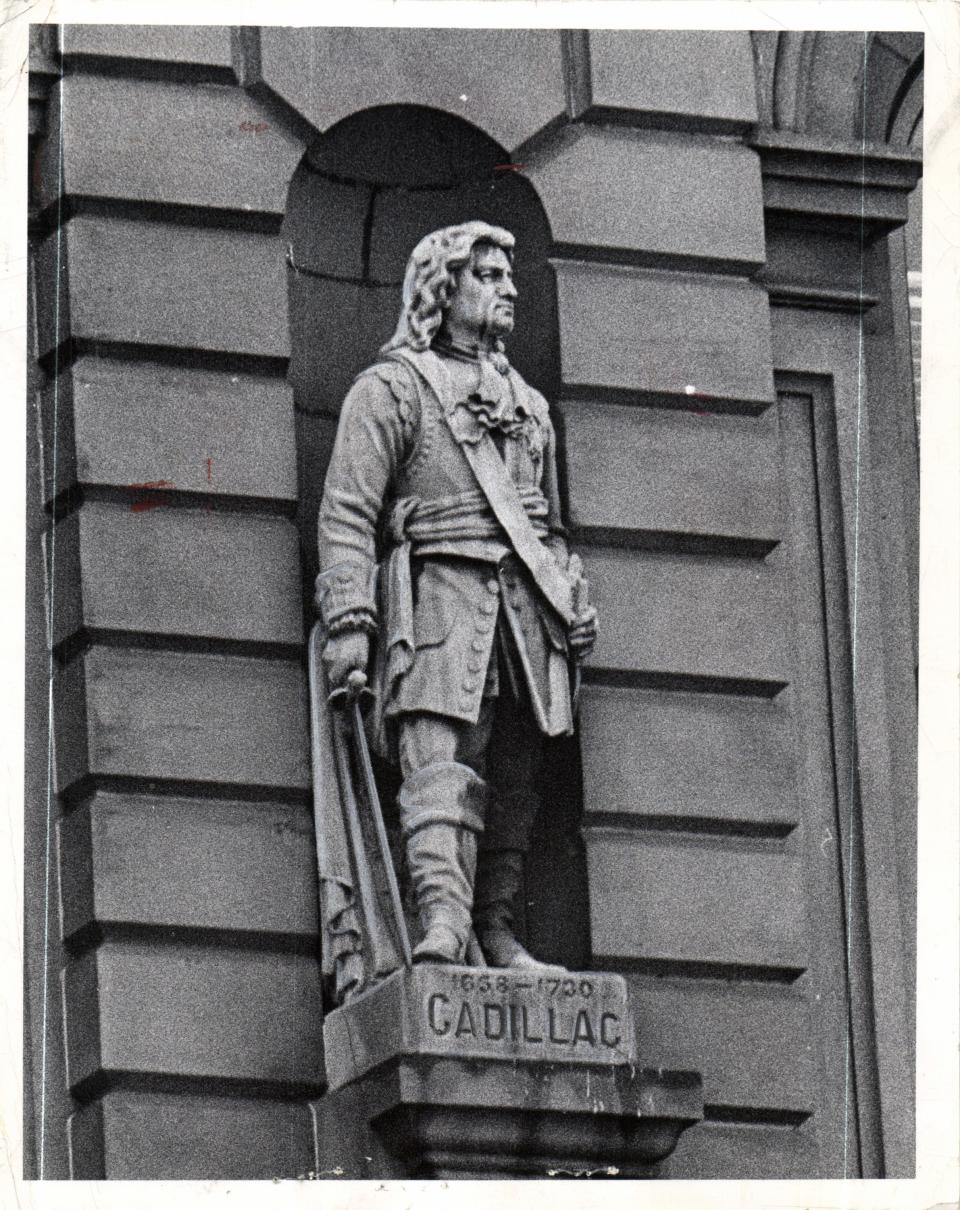

Groups fighting the demolition vowed to immediately seek court orders. A plan was also announced to circulate a petition in an attempt to get the issue on the ballot, but it was ruled to have been filed too late.
Lawsuits bought more time, but could not spare the building. Crews of the Union Wrecking Co. had begun tearing out interior walls and fixtures on May 23, 1961, but pitched battles kept the demolition worker’s ball at bay.
In July 1961, the U.S. District Court of Appeals ruled against Council President Mary Beck, saying that federal courts had no jurisdiction in the case. The final straw came on Friday, August 11, 1961, when both the Federal Court in Detroit and the state Supreme Court denied petitions for an injunction to stop the demolition. The U.S. Supreme Court declined to hear the case.
This article originally appeared on Detroit Free Press: From the Archives: The Painful Death of Detroit’s Old City Hall






